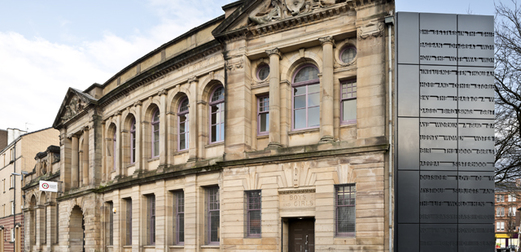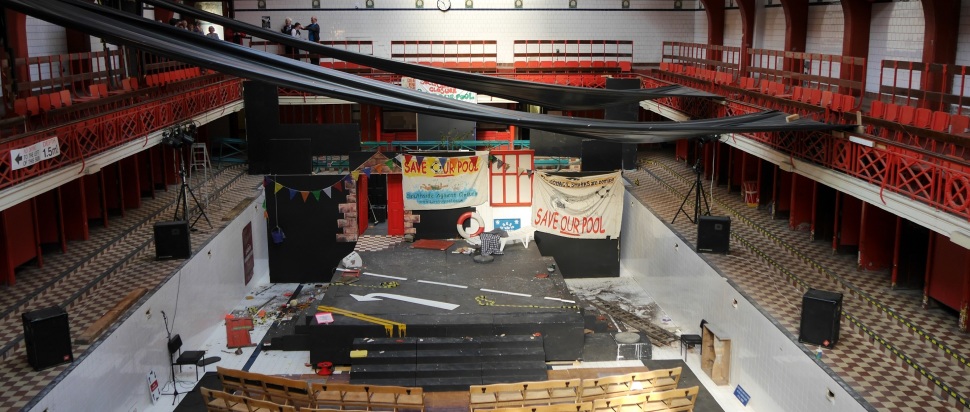Radical Roots: Glasgow's Radical Past & Present
The Southside is home to a number of grassroots and community organisations, working towards a better world. We reflect on the city's activism as a whole – from building occupations and food stalls, to sit-in protests and rent strikes
The Skinny will release the Glasgow City Guide 2023 at venues throughout Scotland from 3 July. Inside, you can find summaries of venues across Glasgow's different areas, as well as articles breaking down Glasgow culture. This article, and tons more like it, can be found in The Glasgow City Guide 2023.
On the morning of 13 May 2021, a Home Office van came along Kenmure Street to detain and remove two men. Before long, the street was the site of a sit-in protest, people from every corner of the city joining to show that everyone is welcome here. The van was surrounded for eight hours in total, after which the two men were finally released to cheers from the protesters. Every Glaswegian has their own distinct memory of that day – whether they could hear the crowd a good few streets away or were in the thick of it, passing around sandwiches. It’s a day that’s rooted itself within the collective psyche of Glasgow and reminded us of one key thing: this city and its people will stick by you.
Such radical, grassroots organising is nothing new to the Southside, or the city at large. Glasgow has dug its heels into the ground time after time to demand better for itself and others.
And its persistence is revolutionary in itself. The longest occupation of a public building in British history took place at Govanhill Baths, just a short walking distance from Kenmure Street. After Glasgow City Council announced the space’s closure, community members occupied it for 140 days, much to Strathclyde Police’s disapproval. "The campaigners were from all parts of the community – a real cross-section of people working together to save their local bath," say Govanhill Baths.
"Glasgow, and more specifically Govanhill, is an area of multiculturalism and deprivation, but also a very strong sense of community," they continue. "Perhaps that's what drives people to become activists and campaign for their own wellbeing, and why Glasgow is home to such a large concentration of groups and activists who are pushing for radical change." A love and care for this community drive change from within it.

Glasgow Women's Library. Credit: Keith Hunter
But these practices don’t solely rely on architecture. One of the Southside’s weekend mainstays is the Food Not Bombs stall. The mutual-aid group (one of many under the same name and ethos internationally) hosts a stall just off Victoria Road, offering free food to all – no questions asked. From bean stew to rhubarb crumble, it’s delicious while also opposing capitalism and the poverty it fosters. Every now and then they’ll post an Instagram asking Southside shops for surplus food; a ‘thank you’ in a caption a few weeks later shows the request hasn’t gone unanswered.
Other businesses follow radical suit. Mount Florida Books supported the recent postal strike with a book lucky dip while hair salon Curlach hosted a haircut raffle for Islamic Relief. With good folk like this, fighting the good fight becomes part of the everyday.
But this fight isn’t bound to the Southside or the 21st century. In 1919, the Battle of George Square proved pivotal in what would later be known as Red Clydeside, a period of radical, left-wing organising in Glasgow, lasting well into the 1930s. Prior to this, during the First World War, working-class women led the Rent Strikes to resist proposed rent increases. The efforts of 25,000 families brought in the Rent Restriction Act, freezing rents at 1914 levels.
Remembering such history, even the blurry bits, is key to understanding our city. Glasgow Women’s Library is one of many public archives within the city. From records of Glasgow Lesbian Line – a network of support for lesbians within the city – to personal documents from the 1970s anti-nuclear activist Kathleen Laura MacLean George, the library’s archives give a history of the city that is rarely granted space in the usual textbooks. There is power in preservation. To look forward, we must be able to look back – and to do so with pride.
This city isn’t perfect; not now, not throughout history. But people – and their protests – make Glasgow and that’s always going to be a Glasgow worth fighting for.
